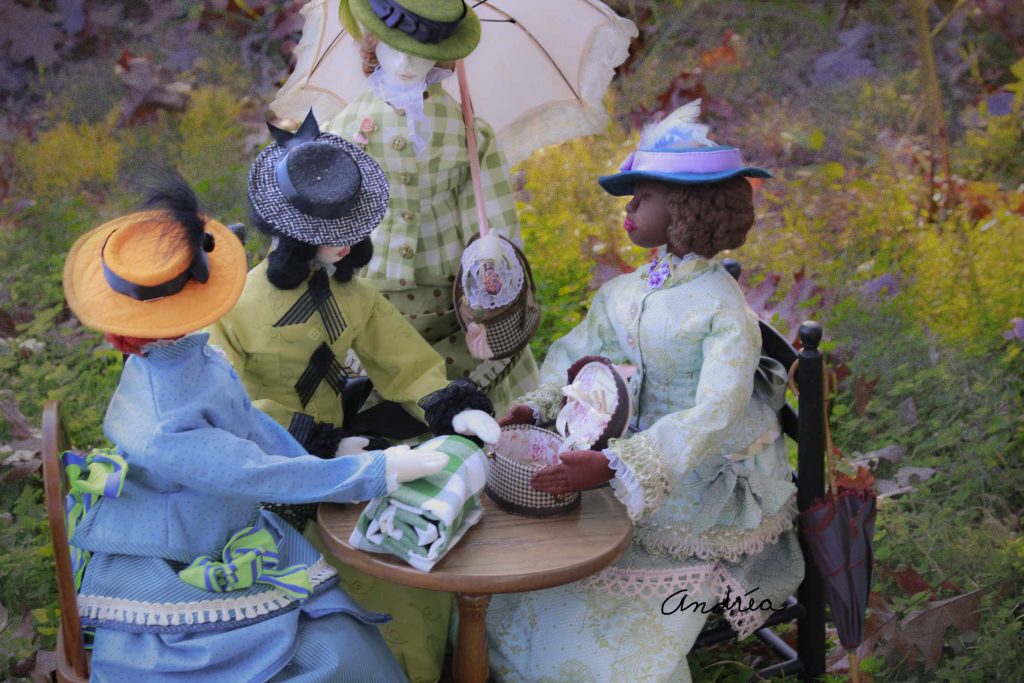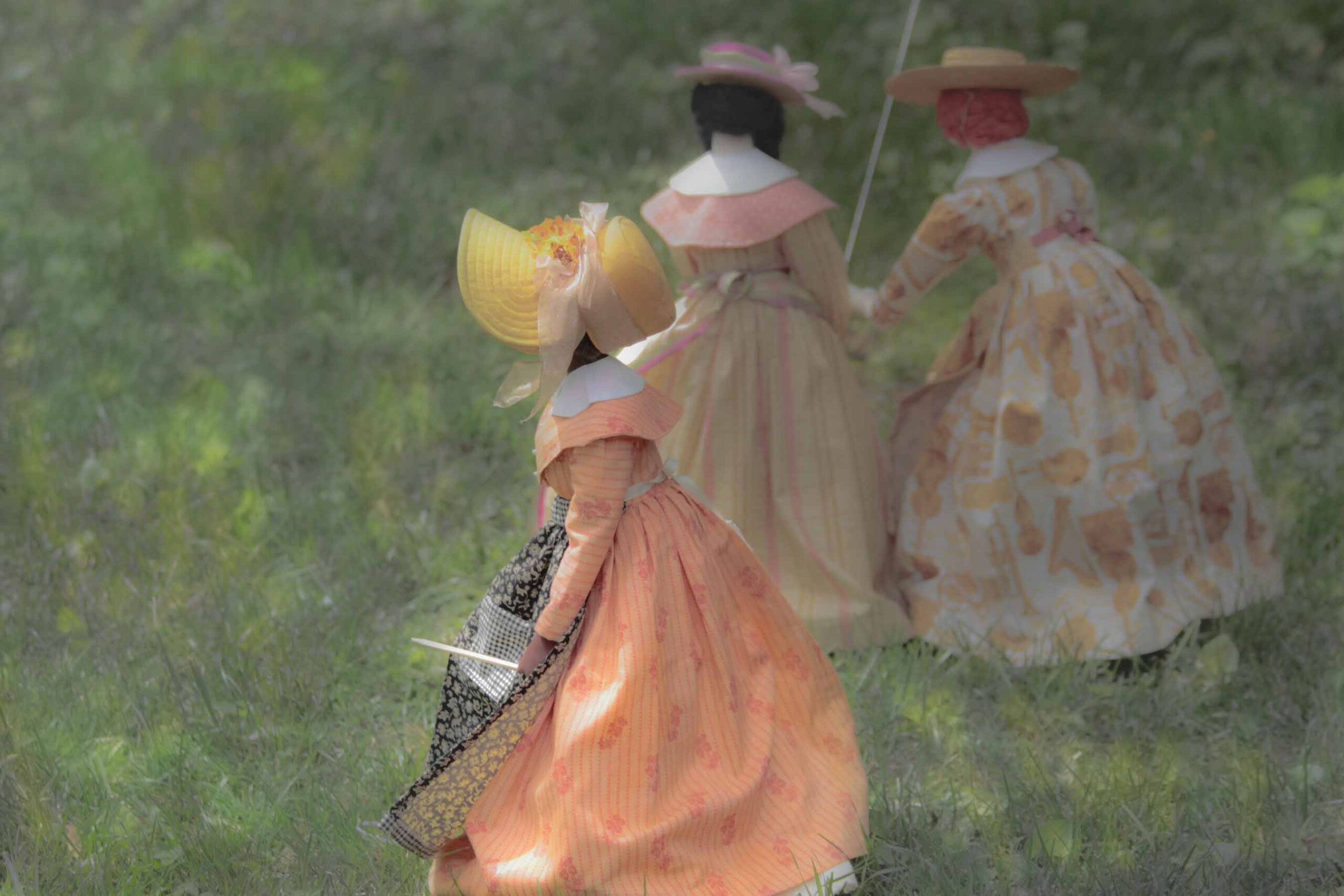Monet Was in My Backyard

My love of impressionist art inspired me to do a series of photograph notecards featuring dolls. I used the work of Monet, Renoir, and Cassatt to pose groups of dolls in idyllic 19th-century settings. I wanted to explore the lighting, soft colors, and fuzzy shapes impressionists are famous for. And I wanted to do the photoshoot in my backyard.
To capture what I was after, I had to do several things:
- Build 1880 dresses for the dolls
- Find the best spot in my yard to capture the light
- Master Photoshop
1880 Doll Dresses
Women’s clothing of the 1880s is quite beautiful, but also quite complex due to the invention of the sewing machine. A simple three-piece skirt took on the look of a cathedral-like structure made up of darts, tucks, buttons, and pleating.
To be honest, I was petrified about creating an 1880 garment in miniature for a doll. Luckily, I found a fantastic book called, Sewing Victorian Doll Clothes: Authentic Costumes from Museum Collections by Michelle Hamilton. She helped me understand that in reality, the basic components of 1880 clothing are simple, but it looks complex because it is made up of multiple pieces or layers. It is the multiple pieces that create the impression of complexity. The book contains excellent instructions, diagrams, and suggestions. And the pictures featuring antique dolls from museum collections are to die for. Just staring at the pages is inspiring.
Backyard Lighting
While too many museums have featured block-buster exhibitions of the art of Claude Monet to the point you think you might choke, I still love his work. I remember how rewarding it was to visit his house in Giverny, France, and see his work at Musée de l’Orangerie in the Tuileries Garden for the first time. For several minutes I literally couldn’t get myself to move away from his paintings. I was spellbound. All my life I had seen his paintings in books and said to myself, “His work is pretty,” but experiencing his paintings in person was something quite surprising.
Monet was obsessed with capturing light in his art and was known to spend months perfecting his approach just for one painting. When I selected this project, I decided to imitate Monet and study the light in my backyard at different times throughout the day. With a canopy of five 100-year-old oak trees, the yard was very dark and the sun struggled to penetrate the canopy of trees. But by carefully noting what the sun was doing at different times of the day, I was able to discover beautiful dappling effects and late afternoon highlights that bathed fall leaves and foliage in soft golds, purples, and deep reds.
Mastering Photoshop
O.K, I admit it. Photoshop is not the most intuitive software I have encountered. But with practice, you can learn to master it. At least that’s what I keep telling myself and so far I’ve been right.
For me, the best way to work with Photoshop is to establish a relationship with specific features you like using and stick with those features until you feel comfortable exploring new ones. There is no need to master every bell and whistle Photoshop offers.
Additionally, taking a class at a community college or local university goes a long way and builds confidence. A while ago I took a Photoshop class at MICA in Baltimore. The instructor suggested using features in Adobe Bridge first to balance darks and lights and then moving on to Photoshop features. My favorite features in Photoshop are the layer and filter selections and the brush, spot healing brush and lasso tools. It takes a while to understand how these options work and a great deal of practice. But with determination and permitting yourself to experiment, Photoshop becomes a tool you will fall in love with again and again.
